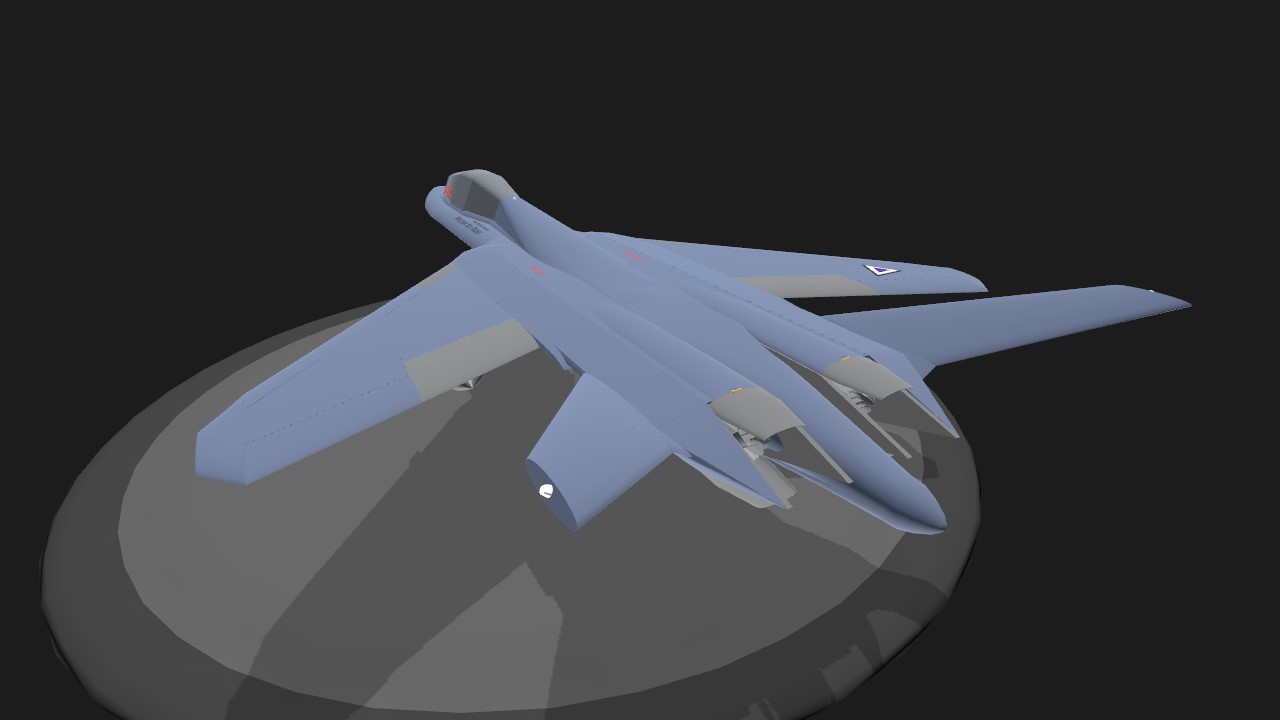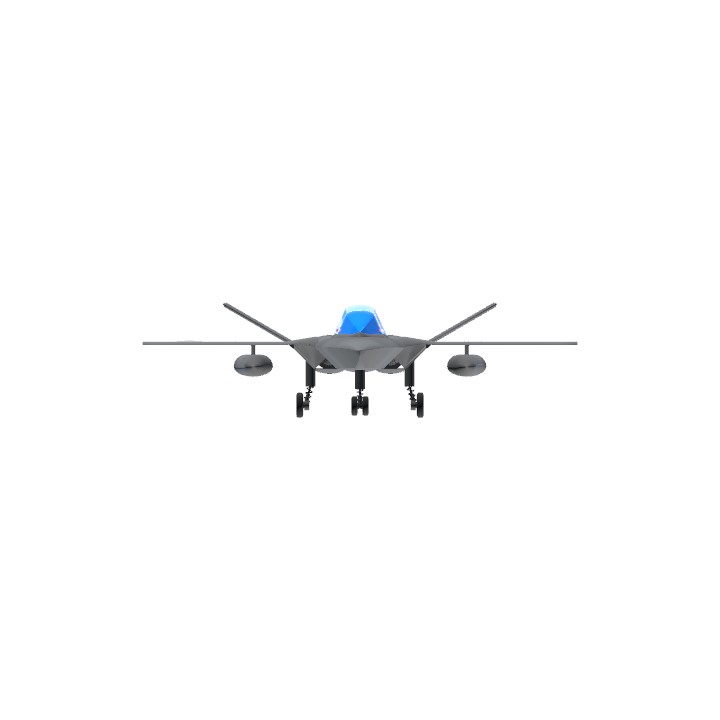<< We intentionally made it so that you can't see in the cockpit. >>
- Anonymous PI Executive

Designed in-house and eye-catching to say the least, the AF-14 "Odin" is a conceptual design that has yet to enter production. It borrows a lot of internal parts from the AF-13 before it to reduce development cost and ease the financial troubles of the company. The AF-14 was meant to serve as a transitional aircraft into the future generations of unmanned aircraft.


For the sake of mechanical simplicity, the Thrust Vectoring systems on the AF-14 are limited to two dimensions. However, for the sake of software complexity, hydraulic actuation of the vectoring paddles is independent. This means not only are there individual controls for each nozzle, but also allows the vectoring paddles to be used as airbrakes.
The specific model of engine is the same ATFE-016 engine on the prior AF-13 and AF-12 models, but in light the AF-13's thermal issues the engine FADEC output would be derated as to avoid such issues. as such, the aircraft does not reach the speeds of its predecessors and is more in line with other PI aircraft.


The agility is a step down from the other two aircraft also, with a lower predicted G force and sustained turn rate. The control surfaces are still electronically controlled, using a finished product of the AF-13's ill-fated tail control surfaces.

The AF-14 is compatible with most of the AAF's small-diameter weapons systems, including a variety of Air-to-Air and lighter Air-To Ground missiles. Onboard pylons reside in fuselage weapons bays, but the AF-10's weapons pod concept makes a return on this airframe, effectively doubling the weapons payload. Of course, these pods could be replaced with heavier ordinance, including Thermobaric cruise missiles or high-yield bombs at the expense of its conventional payload.


built with already established parts and principles, the overall reliability of the aircraft makes it a far more robust design than the highly specialized AF-12 and -13 models. This also keeps maintenance costs low.


The unit cost of these units fall slightly below the other Accilian superplanes, owing to the above, but certain specialized equipment like its COnnection For Flight INterface keep the price point on par. Long term costs are predicted to be far less than those other two planes and would be a far more sustainable aircraft for the AAF's future

- Ive had this stashed away in my unlisteds for a year and a half now, so I decided to just publish it to get it out there. As you probably noticed, I havent been posting, like, at all, and recently I figured Id post all my unreleased stuff
- Given all the other very similar looking aircraft releasing at the time this was built, I stashed it away and promptly forgot about it
- that being said, some things are quite unpolished about this airplane, but it sure does look good.
- I dont remember if all the cockpit switches actually work since I just lifted it from the Wolfhound and gave it a blue interface.
- While Id still consider this a superplane, I'd say its at least somewhat more grounded than the others.
Specifications
General Characteristics
- Created On Windows
- Wingspan 36.2ft (11.0m)
- Length 60.0ft (18.3m)
- Height 9.6ft (2.9m)
- Empty Weight N/A
- Loaded Weight 32,622lbs (14,797kg)
Performance
- Power/Weight Ratio 4.133
- Wing Loading 130.9lbs/ft2 (639.0kg/m2)
- Wing Area 249.2ft2 (23.2m2)
- Drag Points 1300
Parts
- Number of Parts 636
- Control Surfaces 2
- Performance Cost 3,325







👍👍